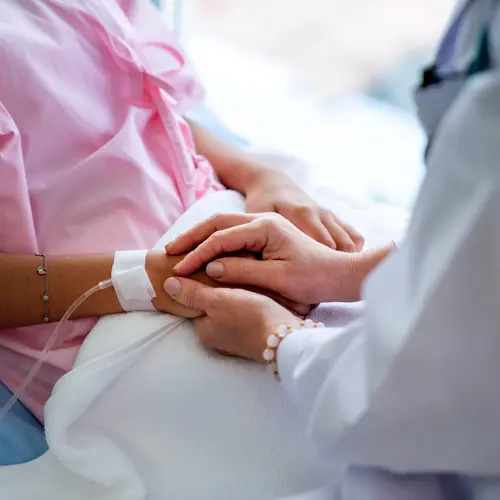When doctors found a mass on the kidney of Heather Garnett's son, they wasted no time starting his care. "His tumor had ruptured, so they wanted to get it out quickly. They found it on a Tuesday and had the surgery right away on Thursday," says Garnett, an account manager and 39-year-old mother of three in Minneapolis.
A biopsy showed her 3-year-old son had Wilms tumor, a rare kidney cancer, though it is the most common form of kidney cancer in children.
While the little boy started chemotherapy, his doctor checked tissue from his tumor with a new test called molecular sequencing. It shows the genetic makeup of a tumor, which helps you figure out the best treatment.
Molecular tumor sequencing is just one of many advances in tests and treatments that let kids with cancer live longer.
Better Tests
Depending on the type of cancer your child has, your doctor may suggest them get one of these tests:
Minimal residual disease assay. It's a test that helps reduce relapses in kids who have acute lymphoblastic leukemia (ALL), the most common childhood cancer.
In the past, after treatment kids might still have cancer cells in their blood that doctors couldn't find. This new test can spot a single ALL cell among up to 100,000 normal cells. It lets your doctor see how well your child responds to treatment, and it can help you decide if you should keep it up.
"We didn't know the patient still had a tiny amount of disease. So now this enables us to intensify therapy for kids that we used to undertreat," says Peter Shaw, MD, deputy director of Johns Hopkins All Children's Cancer & Blood Disorders Institute in St. Petersburg, FL.
Molecular sequencing. The procedure helps your doctor find out how severe your child's cancer is and how well treatment may work.
After her son had molecular sequencing, Garnett learned the tumor was a type called LOH+. The info helped Garnett make the decision to enroll her son in a clinical trial in which kids with that kind of tumor got more intense chemotherapy. The ramped-up treatment helped. Today, at 8 years old, Garnett's son is doing great. He's been cancer-free for almost 5 years.
Doctors use molecular sequencing in several other childhood cancers, including brain tumors, leukemia, and bone cancer.
Better Treatment
Your doctor may tell you about some of these new treatments that are helping kids fight cancer:
Targeted therapy. Unlike chemotherapy, which destroys cancer cells and many healthy cells, targeted drugs shut off a specific feature of the cancer that helps it grow and spread while leaving healthy cells alone. This could be a gene change or a protein that doctors find on the tumor. Because these types of drugs don't destroy healthy cells, they can have fewer side effects.
Targeted medications known as tyrosine kinase inhibitors (TKIs) have made a big impact on childhood chronic myelogenous leukemia (CML).
"TKIs may turn CML, for which the only real cure was bone marrow transplant, into a disease that you can live with a very long time by just taking a pill a day," Shaw says.
This same type of drug is helping kids with ALL who have a rare defect in their genes called a Philadelphia chromosome. "Before, these kids had maybe a 30% to 40% chance of being cured at best, but when we add the drug that specifically targets that mutation that number jumps up into the 70s or 80s, even. That's a big deal," says Stephen Sallan, MD, a pediatric oncologist at Boston Children's Hospital/Dana-Farber Cancer Institute.
Researchers are testing other targeted treatments in certain types of childhood leukemia, brain cancer, bone cancer, and Hodgkin's lymphoma.
CAR T-cell therapy. When your child has cancer, their immune system -- the body's defense against germs -- doesn't automatically fight the disease. But researchers are exploring a method called CAR T-cell therapy to trigger that.
In a child whose ALL comes back after treatment, researchers collect T-cells, a type of immune system cell, and re-engineer them to recognize leukemia. When doctors inject the cells back into the child, the T-cells see the leukemia as a threat and fight it just as they would infections.
Researchers are seeing good results in clinical trials. "It's curing some kids that were not readily curable before," Sallan says.
For now, CAR T-cell therapy only works in children with relapsed ALL. Researchers are trying it out in other cancers, "but it has yet to prove its mettle," Sallan says.
Therapeutic vaccines. These might also trigger the immune system to fight cancer. Unlike preventive vaccines that keep you from getting sick, therapeutic vaccines help fight a disease you already have.
Clinical trials are checking to see if vaccines can be helpful for childhood brain cancer and other cancers. The early studies look promising so far, but more research is needed.
Saving Children's Lives
Cure rates of childhood cancers are on the rise. Forty years ago, about 50% of kids with cancer lived longer than 5 years. Today, more than 80% do.
"But the message can get lost in the numbers of lives that are saved," Sallan says. "It's about who the children are and what those lives mean."

